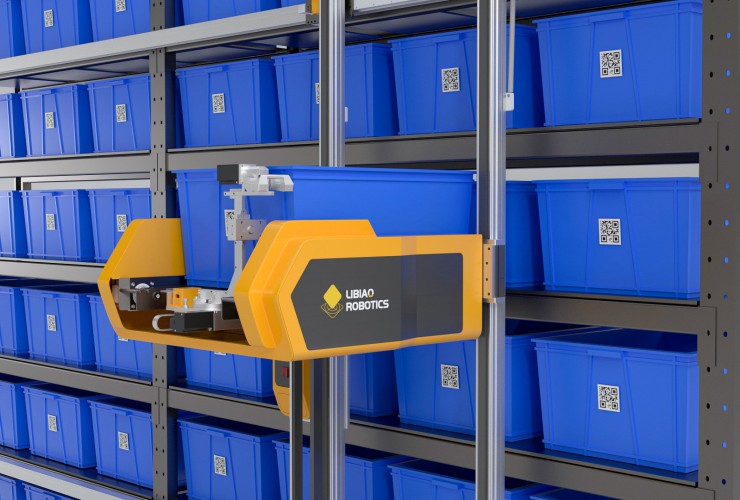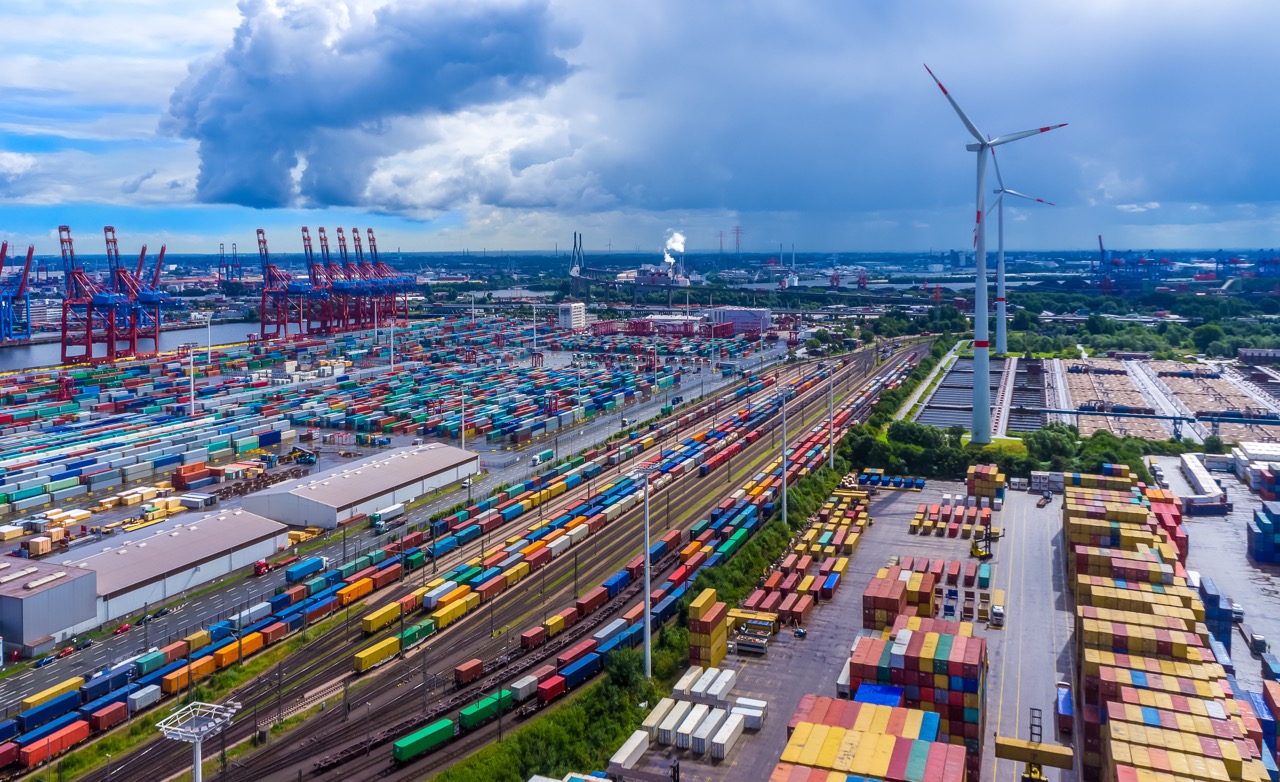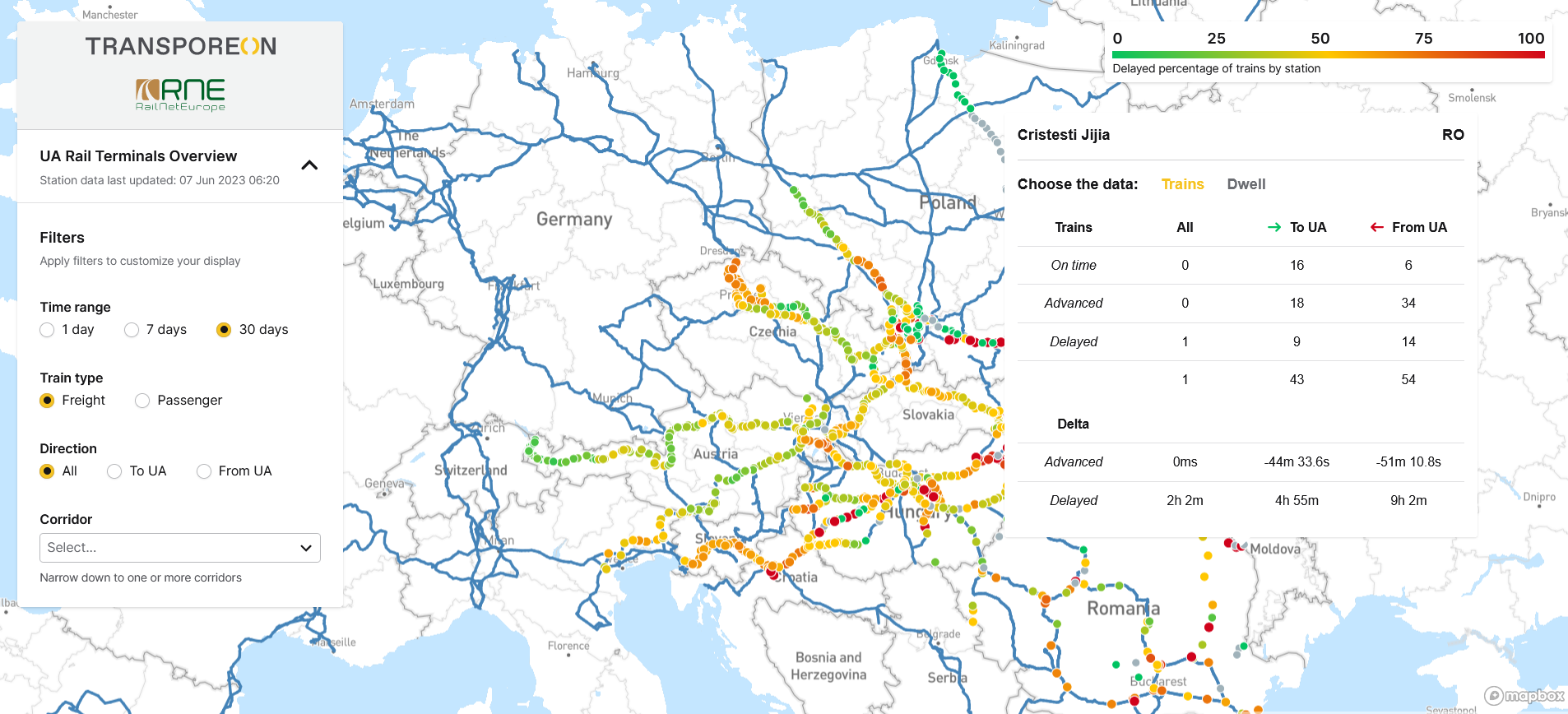As we move inexorably towards the moment when the IFOY Awards are handed out in Dortmund on June 22nd, we continue our look at all of the 2023 finalists and share the verdict from the IFOY test conducted during the evaluation by an expert jury in March. Our next entry is the Airrob container handling robotic system from Zhejiang Libiao Robots Co., Ltd.
Zhejiang Libiao Robots invented the world’s first sortation robots five years ago; now they have created another new robotic system named Airrob container handling robotic system. The robots can climb racks, and store, pick, sort, and move plastic containers, and the climbing robot can move vertical and horizontal direction freely. It is a simple, efficient and flexible system for the fulfilment centre or the work-line-side storage system.
Category: Intralogistics Robot
IFOY Test Report
Libiao Robotics has been nominated for an IFOY AWARD with its Airrob, a “climbing” container robot. Its maximum load capacity is 25kg.
The system is suitable for the vast majority of all containers in this weight class, about 95% according to the manufacturer, and virtually all racks. It allows a quick and easy installation, even when retrofitting existing warehouses. Adjustments to the floor are not required. However, horizontal rails must be attached to the rack, over which the Airrob travels along the rack. The maximum speed of the robot is 2m/s.
The Airrob is attached to a lightweight frame that moves along the horizontal rails through the aisle. This design allows the robot to “climb” up the shelves and store or retrieve the correct container on the shelf at any desired location. Each bin is thus directly accessible at all times.
The frame is flexible and automatically adjusts to the position of the robot. This ensures high reliability and fast, trouble-free and stable transport of the boxes.
The system is suitable for racks up to 12m high. In this case, however, Libiao mounts two Airrobs on top of each other, as this requires less adjustment.
A unique feature is the hook system used to move the crates in and out of the racks. The hook moves within the contours of the robot, which does not penetrate the shelves. This allows the boxes to be stored extremely compact. The hook system is suitable for handling totes on both sides of an aisle. This limits the aisle width to about 85cm.
The concept is lighter than a miniload, a multishuttle or an autonomous case robot (ACR). This is one of the reasons why energy consumption is low. Consumption could not be measured by the IFOY test team, but according to the manufacturer, the savings compared to competing solutions is more than 30%.
The battery built into the Airrob is maintenance-free and is charged when the tablet is switched on and off; according to the non-sliding touch charging principle. The rack on which the Airrob is mounted is powered by mains electricity.
In the Pick&Go setups during IFOY TEST DAYS, the Airrob worked with the manufacturer’s AMRs, but other configurations are also conceivable.
The concept is particularly suitable for micro-fulfilment centres and can also be used in ambient temperatures as low as -20°C, for example in cold stores.
IFOY test verdict: The Libiao Airrob container handling system can set a new standard for mobile robots and fundamentally change existing solutions. The Airrob is cost-effective, scalable, and efficient. The system saves space and labour. The unique hook system guarantees high storage density.
IFOY Innovation Check
Market relevance: The Airrob solution addresses manually operated warehouses that are to be automated cost-effectively using existing racking infrastructure and potentially inhomogeneous container systems. With an ROI of one to two years for the 10 installations currently on the market, the Airrob system is an attractive option for brownfield automation in diverse industries such as warehouse logistics, e-commerce, or manufacturing. Airrob can be used for rack heights between approx. 2m and 14m and is already economical in smaller warehouses starting at 100 sq m. The market potential is high due to the high flexibility of the system, the comparably low costs, the wide range of applications as well as worldwide marketing partners.
Customer benefit: The greatest benefit of Airrob is its flexibility and adaptability for use in existing warehouses without replacing existing infrastructure. This also results in manageable investment costs, which should be a fraction of fully automated systems. Set-up and commissioning are in the range of one to four weeks. Due to the modularity, additional robots can be temporarily integrated for more throughput at peak times. Compared to similar solutions on the market, Airrob is said to consume 30% less energy. In addition, the system is easily reusable in other operating environments.
Novelty / Innovation: Airrob stands out for its simplicity of design, which enables high efficiency and robustness at low cost. Nevertheless, several innovative details have been implemented for the applicability in a wide range of manually operated warehouses. The vertical guide is flexibly mounted on two horizontal rails on the rack, so that even inclined shelves can be approached with the appropriate inclination. A simple hook mechanism allows access to various standard containers from two parallel shelves. Unlike comparable solutions, a fast-charging mechanism ensures 24/7 operation of the pick robot, so fewer pick robots are needed overall.
Functionality / Type of implementation: The pick robot, a type of stacker crane, is designed to be simple and practical, enabling a rapid access time of about 30 seconds to the totes weighing up to 25kg. The throughput of containers can be scaled flexibly by dividing the tasks between the pick robot on the rack and the mobile transport robots. With a temperature range between -20°C and 50°C, freezer applications are also possible.
Verdict: With Airrob, existing rack storage systems for any standard containers can be automated very cost-effectively. The easily retrofittable and technically minimalist solution for removing totes from heights of up to 14m, in conjunction with a fleet of mobile transport robots, enables significant efficiency gains compared to manual warehouse management. Technical highlights include the simple but universal gripper for crate removal and return, adaptivity to typical real-world conditions such as sloping shelf layers, and a fast-charging function for 24/7 operation.
Market relevance ++
Customer benefit ++
Novelty / Innovation +
Functionality / Type of implementation ++
[KEY: ++ very good / + good / Ø balanced / – less / — not available]






